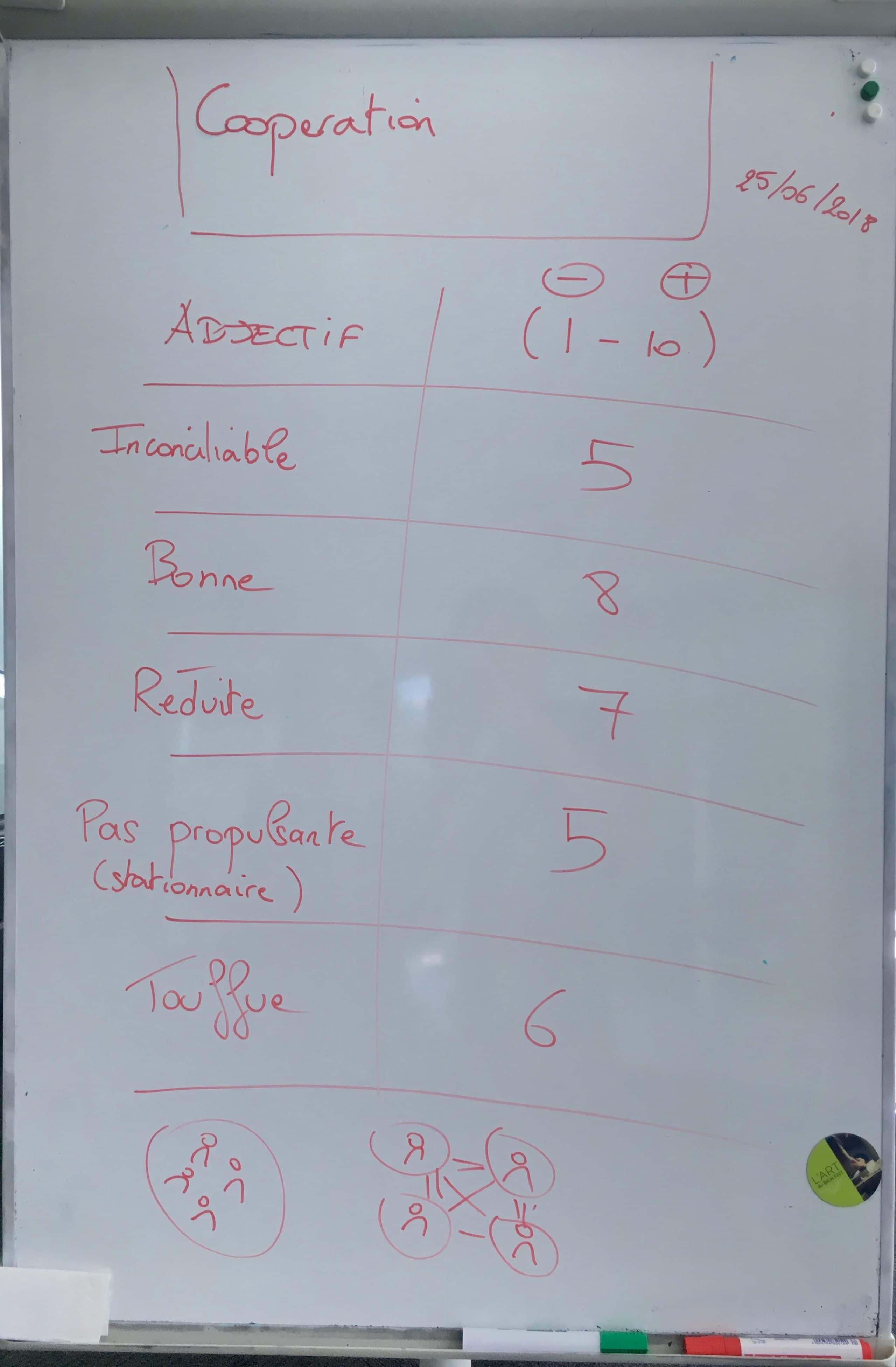
Photo by Felix Russell-Saw on Unsplash
Vous connaissez le principe du ROTI (Return On Time Invested) ? Cette activité de fin de réunion pour obtenir du feedback et générer de l’amélioration continue ? La trouvez-vous efficace ?
C’est lors de l’accompagnement d’une équipe où l’on me demandait d’assister à un Sprint Planning que je me suis dit que plutôt que de simplement leur dire ce que j’en avais pensé, j’allais d’abord leur demander leur avis. Le ROTI me semblait être une option, mais j’ai voulu tenter autre chose et j’ai été assez surpris du résultat.
J’ai tenté cette nouvelle idée lors d’une rétrospective : je vous partage ce qu’il s’est passé dans cet article ! 🙂
Pourquoi je n’aime pas (trop) le ROTI

Comme tout outil, ce qui importe est la manière dont on l’utilise.
Jusque là je suis d’accord.
Il s’avère simplement que la plupart du temps, lorsque j’ai dû expérimenter un ROTI, que ce soit en tant que facilitateur ou en tant que participant, je retrouvais les patterns suivants :
- Personne ne met 1
- Parce qu’on ne veut pas trop vexer la personne
- Parce qu’on ne veut pas avoir à l’expliquer par la suite
- Personne ne met 5
- Parce que rien n’est parfait et qu’il y a toujours quelque chose à améliorer
- Par défaut, on met 3
- Parce qu’on a pas trop d’avis, alors on tape au milieu
- Au mieux, on met 4
- Pour pas être embêté à devoir l’expliquer car vu que personne ne met 5, cela fera probablement parti des plus hauts scores
- Reste plus que le 2
- Si on a envie de plomber l’ambiance en disant tout ce qui ne nous a pas plu pendant la réunion
Bien sûr, je caricature.
Mais la culture du feedback n’est pas toujours simple à mettre en oeuvre et je trouve que le Perfection Game apparaît plus adapté dans ce genre de situation car il explicite des règles claires en termes de structuration des retours et de suggestions d’amélioration.
Le ROTI, lui, peut tomber souvent dans la critique gratuite où le participant ne s’exprime qu’en tant que consommateur et non acteur de la situation. Difficile dans ce cas d’obtenir de véritable feedback actionnable.
Ex : il faisait trop chaud / froid, on a pas avancé, c’était trop long…
Le problème principal selon moi est le fait de ne se baser que sur une notation chiffrée, parfois un peu froide, non engageante et pas toujours représentative de la manière dont on peut avoir vécu le moment. Peut-être qu’une petite touche d’émotionnel ne ferait pas de mal 🙂
Mais encore une fois :
Comme tout outil, ce qui importe est la manière dont on l’utilise.
Proposition et expérimentation
Lors d’une rétrospective, j’ai demandé aux membres d’une équipe d’évaluer l’état de leur coopération.
Pour ce faire, je les ai invité à me donner 2 choses :
- Un adjectif qualificatif : décrivant leur ressenti actuel
- Un nombre entre 1 et 10 : décrivant leur satisfaction actuelle
Après quelques minutes de réflexion individuelle, je réunis les réponses de chacun sur un tableau.
Voici le résultat obtenu :

Ce que je trouve intéressant dans cette approche c’est qu’il n’est pas obligatoire que l’adjectif supporte la note et vice-versa ce qui peut donner lieu à des conversations intéressantes.
L’adjectif donne un aspect immédiat au questionnement, c’est-à-dire que si l’on posait la même question le lendemain, l’adjectif pourrait être différent et ce n’est pas grave.
Quelques explications de ces résultats :
- Inconciliable, 5 : « la coopération n’apparaît plus comme un objectif en soi mais c’est ok pour moi, je l’ai accepté »
- Bonne, 8 : « rien à dire, tout va bien »
- Réduite, 7 : « les interactions entre les membres de l’équipe sont réduites à cause des spécialisations de chacun, mais je trouve que ça fonctionne plutôt bien »
- Pas propulsante, 5 : « la dynamique d’équipe n’est pas très stimulante, mais je l’accepte et fait avec »
- Touffue, 6 : « il y a beaucoup de choses à faire et donc on a chacun la tête un peu sous l’eau. On peut faire mieux mais c’est ok pour moi »
Pour redonner un peu de contexte, le manager de cette équipe m’avait demandé un accompagnement en mode Agile Rocket sur le Module Coopérer : l’objectif initial de cette approche étant de transformer une somme d’individus en un collectif qui prend de meilleures décisions ensemble.
Après quelques mois d’expérimentation et en voyant les résultats émergeant de la rétrospective, il est clair que la perception des personnes n’était pas du tout la même. Maintenant, cela ne semblait pas particulièrement les surprendre. L’équipe s’est alors rendue compte que de chercher la coopération entre tous les membres de l’équipe tout le temps n’était pas forcément pertinent.
Nous avons ainsi par la suite pu aborder la notion d’équipe et de taskforces ponctuelles pour comprendre la différence de mécanisme de coopération dans ces 2 systèmes.
Conclusion
J’ai trouvé cette alternative génératrice d’échanges très intéressants. En effet, la recherche de l’adjectif n’est pas une tâche facile mais de passer par un peu d’émotionnel a finalement pu laisser place à des sujets plus profonds qui n’avaient pas réussi à sortir précédemment.
Maintenant, il faut garder en tête que l’ajout d’un adjectif est une manière de générer de la conversation donc cela fonctionnera probablement mieux si vous avez prévu un peu de temps pour échanger. Néanmoins, ce format est simple et rapide à mettre en oeuvre. Le travail réside simplement en de la facilitation des échanges.
Aller au plus juste, au bon moment, de la bonne manière, n’est-ce pas ce que l’on cherche en Agilité ? 🙂







Une réponse
Merci pour ce partage utile!